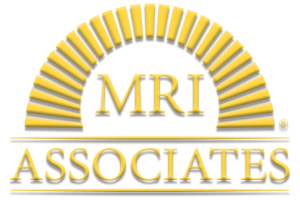Breast Magnetic Resonance Imaging (MRI) is another non-invasive breast imaging tool that produces detailed images of the breast. Breast MRI utilizes a magnetic field and radio waves as well as an intravenous injection of a contrast agent to highlight breast abnormalities. Hundreds of cross-sectional images of the breast are produced during the exam, allowing a three-dimensional rendering of the breast.
Absolutely. A Breast MRI should never take the place of your annual x-ray mammogram. Even if you have a normal Breast MRI, you should still continue to have an annual mammogram, one of the most effective tools in breast cancer detection.
The decision to scan during pregnancy should be made on an individual basis. There is no known adverse effect of MRI on the fetus. The safety of gadolinium contrast has not been established for pregnant or nursing mothers. However, it is known that gadolinium-based MR contrast media crosses the human placenta and into the fetus when given in clinical dose ranges. Current data indicates that very little gadolinium is secreted in breast milk, with no known toxic effects on the infant. The supervising physician should take this into account, weighing potential risks and benefits, when counseling pregnant and lactating women referred for breast MRI.
Current Indications for Breast MRI: Lesion characterization – Breast MRI may be indicated when other imaging examinations, such as ultrasound, mammography and physical examination are inconclusive for the presence of breast cancer.
Local staging of breast cancer: In patients with biopsy- proven malignancy, breast MRI is used to determine extent of disease (multifocality and multicentricity) in the ipsi-lateral breast and to screen for disease in the asymptomatic contra-lateral breast.
Neo adjuvant chemotherapy: MRI is used before and during the course of chmotherapy to evaluate chemotherapeutic response and extent of residual disease prior to surgical treatment.
Post-lumpectomy bed evaluation/scar vs. recurrence: MRI is applied in patients with prior lumpectomy and questionable recurrence within the lumpectomy bed on mammography and ultrasound.
Positive margins post lumpectomy: MRI is used to assess the extent of residual diease in patients with close or positive margins post-lumpectomy. MRI can help dtermine if re-excision or mastectomy will be necessary.
Chest wall invasion: MRI is indicated for the evaluation of chest wall involvement prior to lumpectomy or mastectomy.
Occult primary: In patients presenting with axillary lymphadenopathy and no mammo graphic evidence of malignancy, MRI is utilized to assess for an occult primary.
Palpable lump: In patients with a palpable lump and a negative diagnostic evaluation on mammography and sonography, MRI may be useful to exclude an underlying abnormality.
Problem-solving/difficult mammogram: MRI may be used as a problem-solving tool in the situation of a difficult mammogram.
Screening of high-risk patients: Screening MRI is now recommended by the ACS for women with an approximate 20 percent to 25 percent or greater lifetime risk of breast cancer, including women with a strong family history of breast or ovarian cancer and women treated for Hodgkin’s disease.
Implant integrity: Non-contrasted MRI using silicone-sensitive sequences is used to assess implant integrity (intra- and extra-capsular implant rupture).

Main Office:
PALM HARBOR MRI
32615 US Hwy 19 North
Palm Harbor, FL 34684
Phone: 727.787.6900
Fax: 727.216.4789